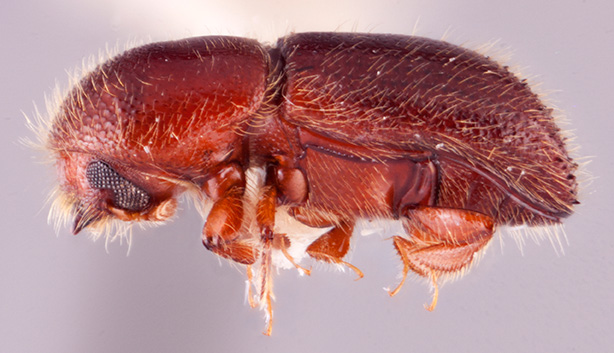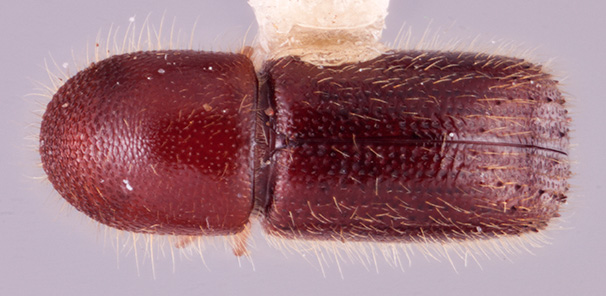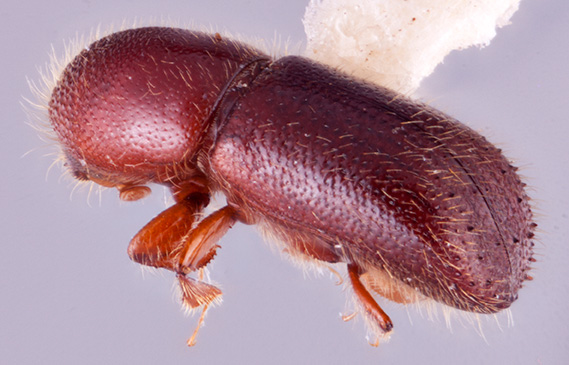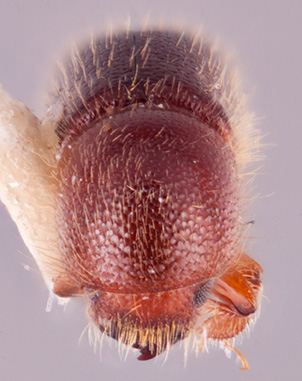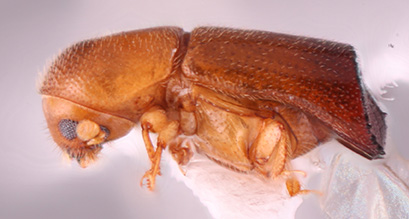Truncaudum
|
Truncaudum agnatum; R.K. Osborn |
|
Truncaudum agnatum; R.K. Osborn |
|
Truncaudum agnatum; R.K. Osborn |
|
Truncaudum agnatum; R.K. Osborn |
|
Truncaudum bullatum; S.M. Smith |
Taxonomy
Truncaudum Hulcr and Cognato, 2010a: 24.
Diagnosis
Small to moderately sized, somewhat elongate (1.90−2.90 mm long, 2.44−2.90 times as long as wide), and densely pubescent. The genus is recognized by the declivitydeclivity:
downward slope of either the pronotum or elytra
 obliquely or abruptly truncatetruncate:
obliquely or abruptly truncatetruncate:
appearing cut off or suddenly shortened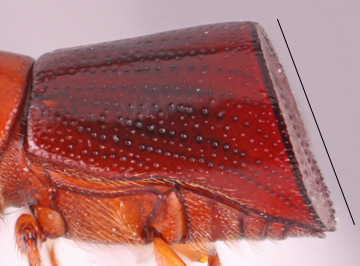 ; pronotum elongate without distinct serrationsserration:
; pronotum elongate without distinct serrationsserration:
row of asperities; a saw-like structure  on anterioranterior:
on anterioranterior:
the front or forward; opposite of posterior margin; scutellum visible; procoxae contiguous; and mycangial tufts absent. The two species in Southeast Asia are strikingly similar to several small Cyclorhipidion species and can be distinguished by the type 2 antennalantennal:
margin; scutellum visible; procoxae contiguous; and mycangial tufts absent. The two species in Southeast Asia are strikingly similar to several small Cyclorhipidion species and can be distinguished by the type 2 antennalantennal:
pertaining to the antennae
club (Cyclorhipidion has types 3, 4, 5).
May be confused with
Amasa, Cyclorhipidion, and Pseudowebbia
Distribution
found throughout the Paleotropics and Australasia with one species occurring in Africa
Gallery system
The gallery system has a few branches, usually in the transverse plane, and at least one brood chamber in the longitudinal plane (Browne 1961bBrowne 1961b:
Browne FG. 1961b. The biology of Malayan Scolytidae and Platypodidae. Malayan Forest Records 22: 1-255.).

